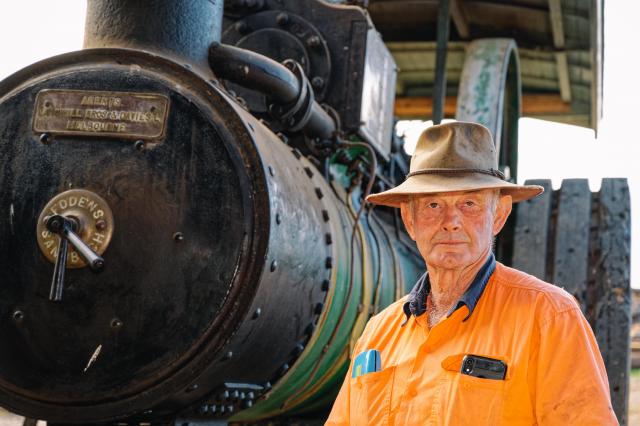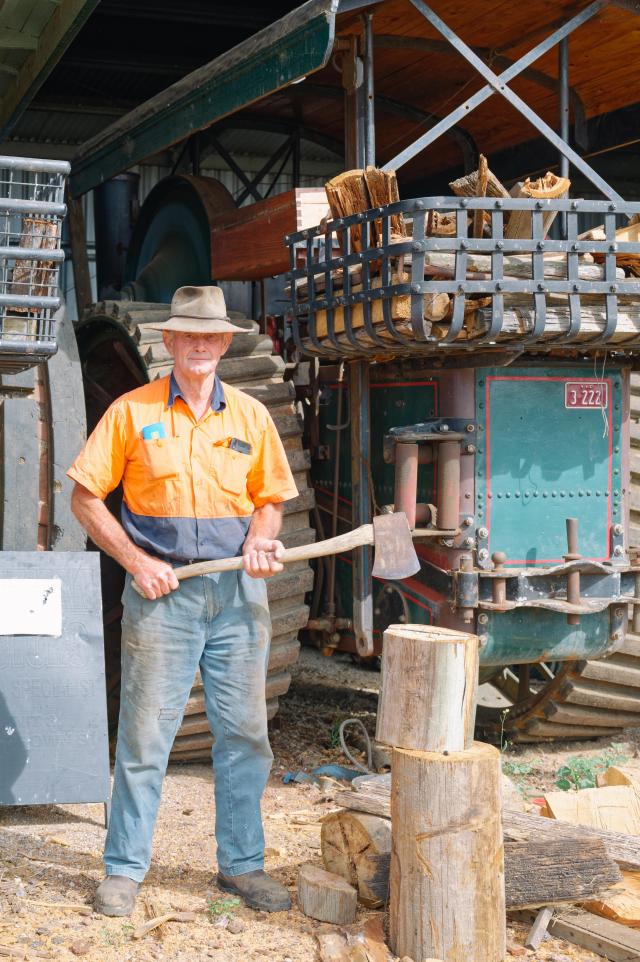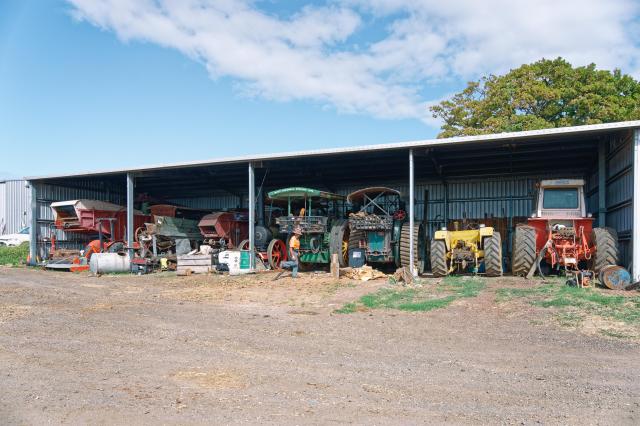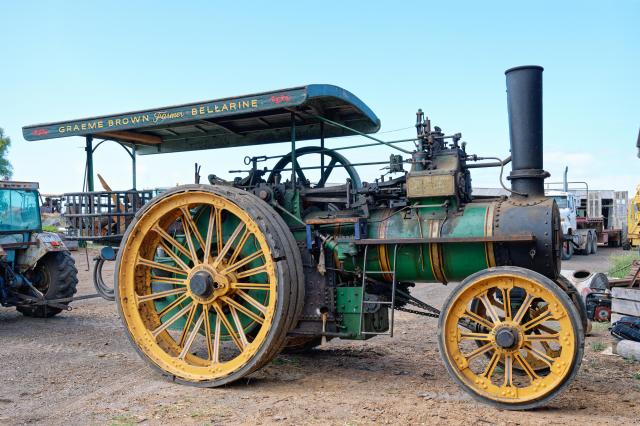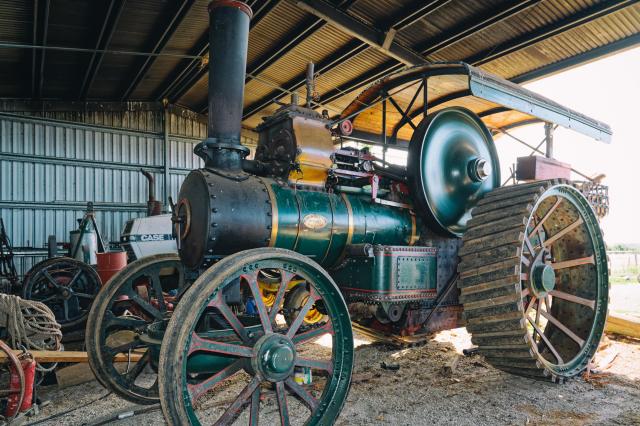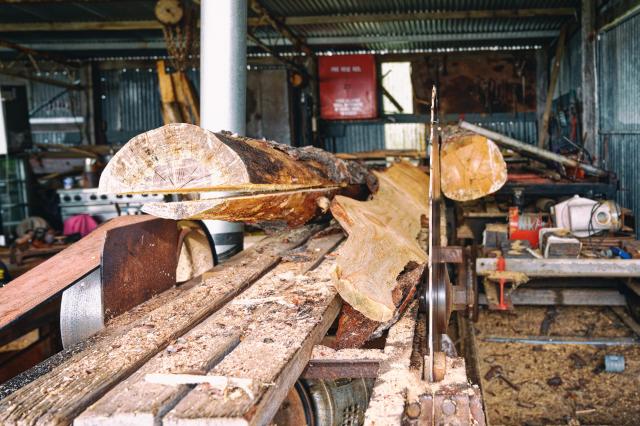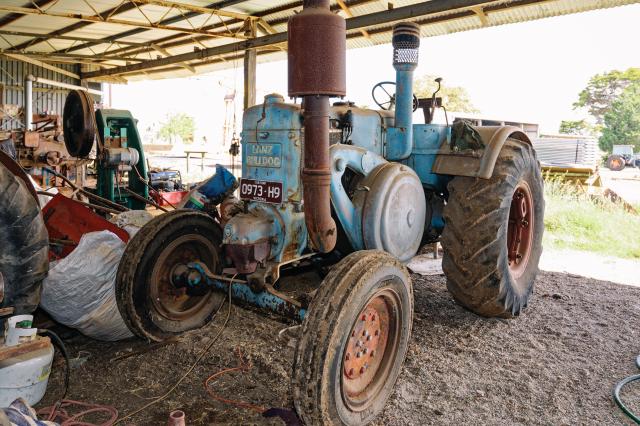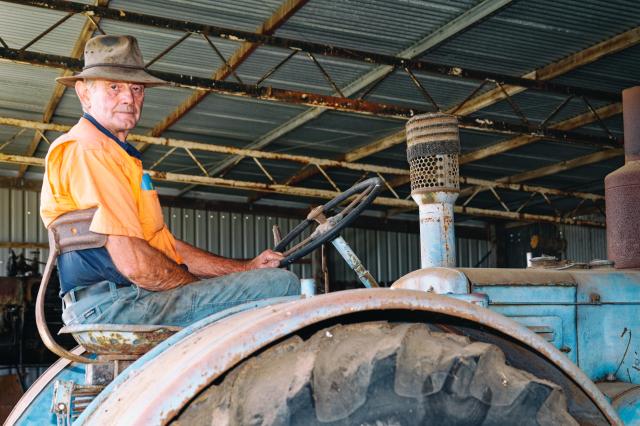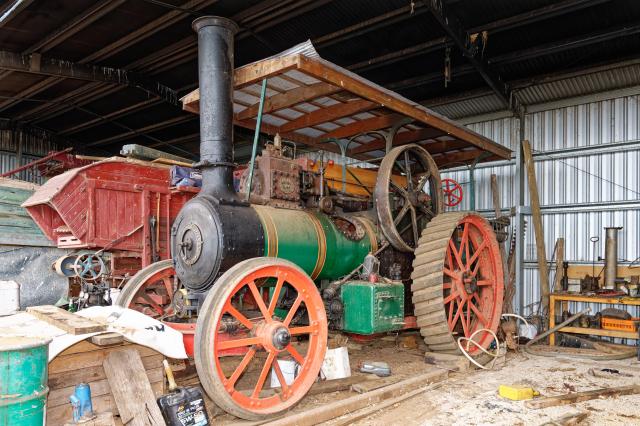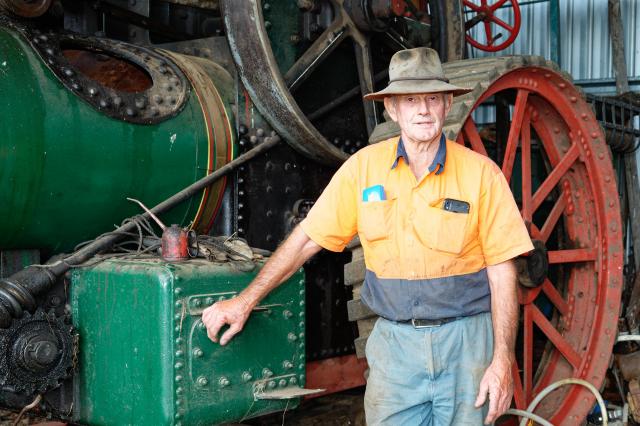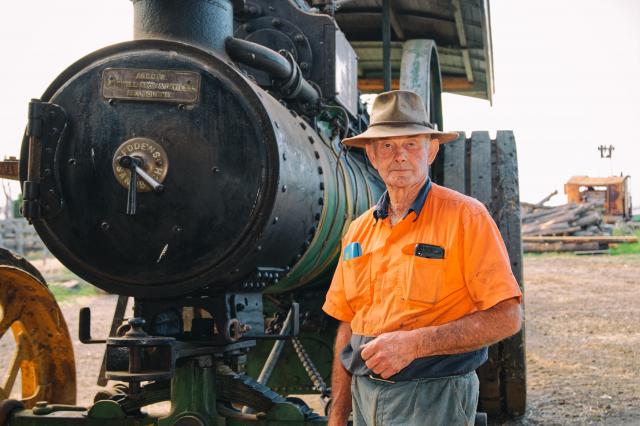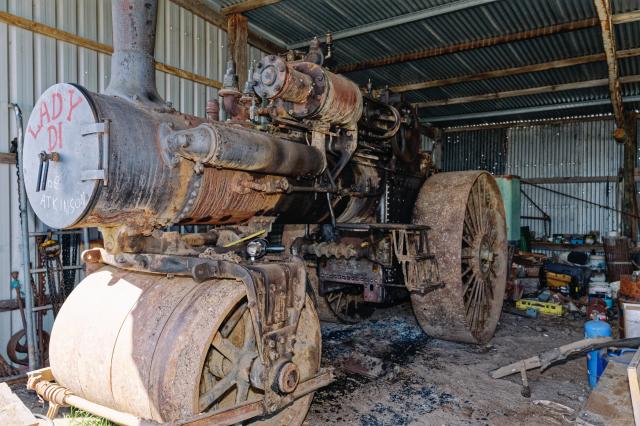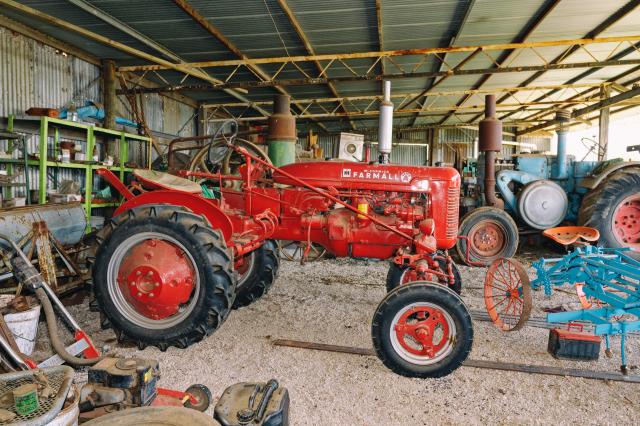You won’t find many people who are as passionate about steam engines as Graeme Brown. He talks to JUSTIN FLYNN about his collection that sits proudly on his north Bellarine farm.
For as long as 73-year-old farmer Graeme Brown can remember, all he wanted was to own a steam traction engine.
A third generation farmer from a third generation Bellarine Peninsula family, Graeme was fascinated by them.
“Ever since I was about 10 years old I always wanted one but never had any money so I couldn’t afford one until about 20 years ago and I bought one at a clearance sale,” he says.
“It took me five years to fix it but I got what I wanted.”
He set about painstakingly restoring his pride and joy to its former glory and then sold it to who Graeme describes as a “really good friend”. He made all the parts himself.
“He’s a boilermaker and he gave me a hand to restore it,” he says.
“And he said ‘I’ll help you restore it if I can have a drive when we’re finished’.
“I told him not to worry, he can drive it all he likes. We became friends and he bought the first one off me when I had it for sale. It was an American one and a really good one.”
Graeme has three steam engines tucked away safely on his north Bellarine farm.
“I’ve always had the passion for steam engines and since then I’ve been collecting the odd thing and putting it all together,” he says.
“I’ve really concentrated on steam engines. I’ve got other stuff there, but steam engines and the machines they drive are what I’ve concentrated on.”
The engines were imported from the UK just after the turn of the century.
“When steam engines first came to Australia, the Americans started to build them and they sent them out to Australia and the British government rang up and said ‘you’re not allowed to buy them’ and put a bounty on them,” Graeme says.
“They were made a little bit lighter and were cheaper to buy, but when they put the bounty on them they were dearer. That was the end of the American ones.”
Graeme has a Clayton Shuttleworth thrasher, a Robert Hill chaff cutter made in Geelong and a Robert Hill saw bench.
“It’s (a thrasher) the same as a wheat header,” Graeme explains to the clueless person at the other end of the phone.
“Thrashers do that but they bring the hay or the sheaves to the thrasher to the top and the grain comes out one side and the straw comes out the other side.
“There’s also a Humble & Nicholson straw press that’s not mine, but I use the steam engines to drive it.”
When I explain to Graeme that I grew up on a farm in the Goulburn Valley and remember my grandfather with similar types of machinery, I lament that I feel guilty for not taking more of an interest in my youth.
“That’s what happens,” he says.
“You’re either into it or you’re not. We’re trying to keep the dream alive.”
The ‘we’ Graeme refers to is the Bellarine Vintage Machinery Group.
The members fall under the banner of the Bellarine Agricultural Show and aim to restore and display items of vintage machinery.
Each March the group showcases its work at the Bellarine Agricultural Show. The show has been cancelled this year although it will be back bigger and better in 2023.
“Because we direct the show towards kids and entertainment of families, we thought the kids may not have been vaccinated by the first weekend in March,” Graeme says.
“Our club has got several younger members who are very interested and keen. Hopefully they are going to take over when we fall off our perch. A lot of these machines will last another 100 years.
“The old stuff is a bit more rugged than the modern stuff. How many cars these days will still be going in 100 years time?
“The public seem to be more interested in the old stuff working than some of the sideshow stuff.”
Graeme has some big sheds on his farm to store his collection.
“I started with one steam engine and then I bought another one and then I sold the first one and bought another,” he says.
“So I’ve got three steam engines, a few tractors and some other gear like the thrasher and the chaff cutter and a few little odds and ends and I’ve got a saw mill as well.
“The steam engine drives the saw mill. There’s a lot of timber around the peninsula and the tree guys come in and cut all these old trees down because they are dangerous and I get hold of the wood and I mill it and you can make furniture out of it.”
He still farms, but sold the actual farming business four years ago.
“I’ve still got cattle, but I sold the main business four years ago so I could concentrate on my retirement,” he says.
“I rear beef cattle and sell them to whoever wants to buy them and that makes me get up every morning – to look after the cows.”
The enthusiasm in which Graeme talks about his collection, his farm and old machinery in general is infectious.
“It’s about the evolution of agriculture,” he says.
“Two or three hundred years ago they had an ox or a horse and towed the ploughs around. It took 200 years and after the First World War, tractors became very widespread. It did take farmers a long time to adapt to new methods.
“It was like a bit of a revolution. You get up at five o’clock every morning so you can feed the horses so you can work them for four hours a day, but with a tractor you just went out and turned the key. There’s a machine to do everything these days.”
So what type of person buys a steam engine?
“Mainly collectors buy them,” Graeme says.
“They don’t get bought to be used, only to be played with. They are worth quite a lot of money.
“It’s very satisfying. To be driving something that weighs 18 tonne down the road … it only goes four or five miles an hour but it’s good.
“When I finished the first engine and started it up I felt on top of the world.”

